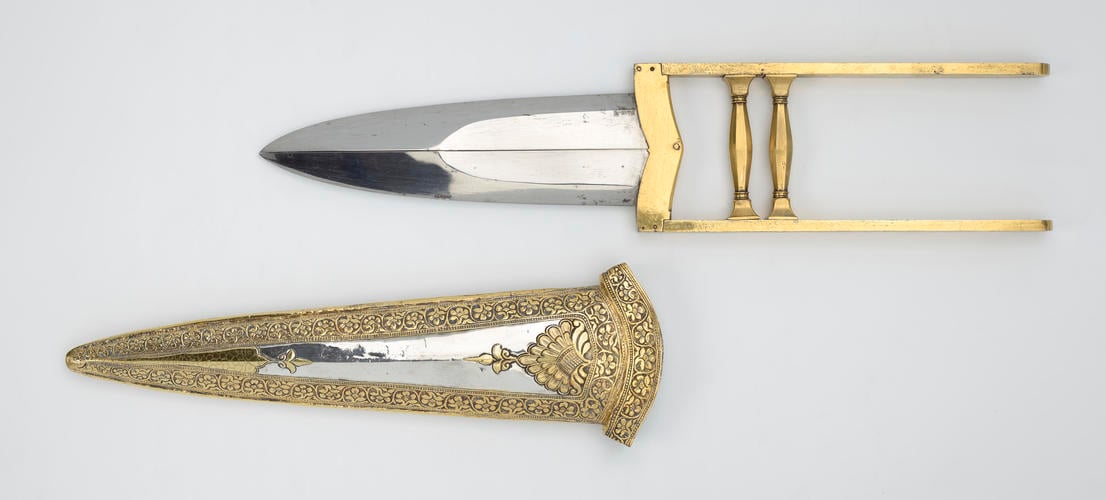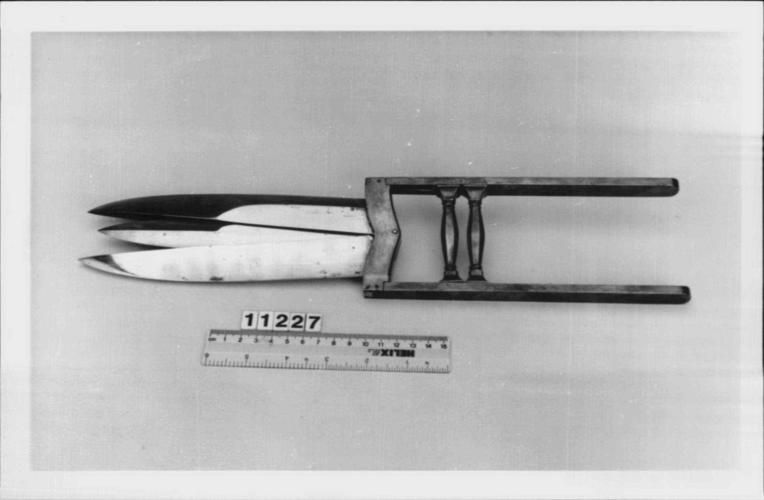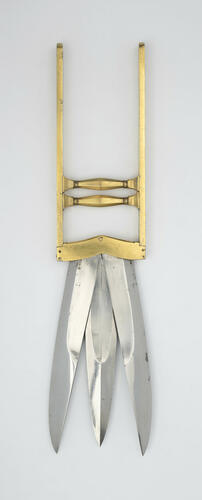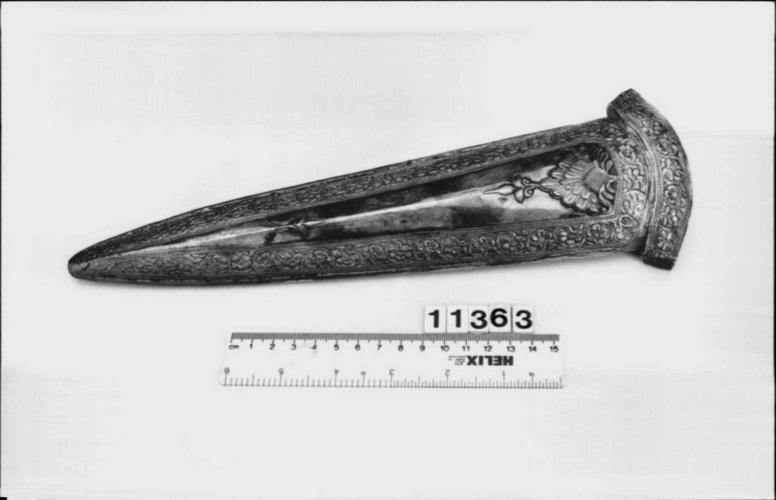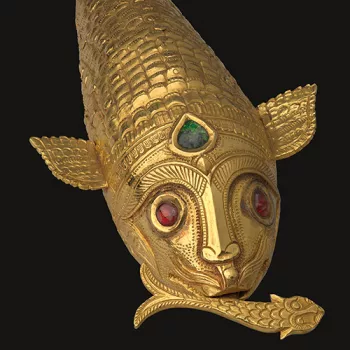Punch dagger c. 1870 - 1875
Steel, silver, gilded iron | 39.8 x 8.8 x 1.8 cm (whole object) | RCIN 11227
-
A punch dagger or katar with a broad blade. The blade is designed with a spring mechanism that is activated by applying pressure on the transverse bar closest to the hilt. This causes the blade to split to reveal another blade concealed The scabbard made of scabbard with a thick chased border of flowers and vines in gold. This decorative use of silver and gold is called ganga-jumna in reference to the two important rivers of north India – the River Ganges, supposedly silver, and the River Jumna (or Yamuna) as gold. This style of decoration may also be linked with the traditional decoration of steel arms and armour with borders of overlaid gold patterns (See RCIN 11238).
The term 'punch dagger' is derived from the action with which it is used, with an upright fist gripping the double crossbars. This variation of the traditional katar, which usually has a single blade, is a showcase of the craftsman's skill and ingenuity.
Provenance
Presented to King Edward VII, when Prince of Wales, during his tour of India in 1875-76 by Bijai Sen, Raja of Mandi.
-
Creator(s)
(nationality)Acquirer(s)
-
Medium and techniques
Steel, silver, gilded iron
Measurements
39.8 x 8.8 x 1.8 cm (whole object)
Alternative title(s)
Katar





